 |
| General Principles
of Universal Design Policy |
 |
| I. Present state and
challenges |
 |
 |
I. Present
state and challenges |
 |
 |
 |
1. Past efforts
In the past, cities and transportation
systems were provided in Japan assuming that they would be used mainly by
people free of any handicaps.
The realization that Japan will soon become an aged society
and the growing demand by handicapped people to participate fully in society
has been accompanied by the beginning of efforts to remove barriers to the
use by elderly and handicapped people of buildings, roads, public transportation
systems and other spaces.

|
In 1982, building design standards that
consider the use of buildings by handicapped people were enacted. |
 |
In 1983, guidelines to the provision of
facilities for the use of handicapped people in public transportation
terminals were enacted. |
 |
In 1991, It was stipulated that in principle,
newly constructed public rental housing must be barrier-free. |
| Example of barrier-free measures in homes |
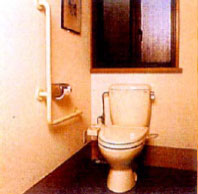 |
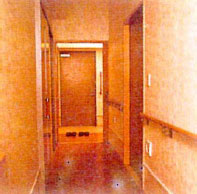 |
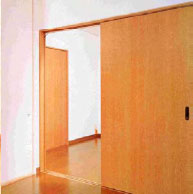 |
| Installation of handrails |
Widening corridors |
Removal of level differences |

|
In 1993, The Road Structure Regulations
were revised to permit wheelchair users to meet and pass each other
safely and smoothly. |
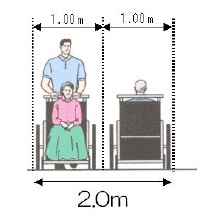 |
|
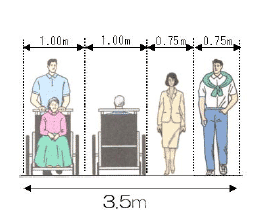 |
Example of a sidewalk on
a road with few pedestrians |
|
Example of a sidewalk near a hospital etc. |

|
The Act on Buildings Accessible and Usable
by the Elderly and Physically Handicapped (Heartful Building Law)
was enacted in 1994. |
| Image of a Heartful Building |
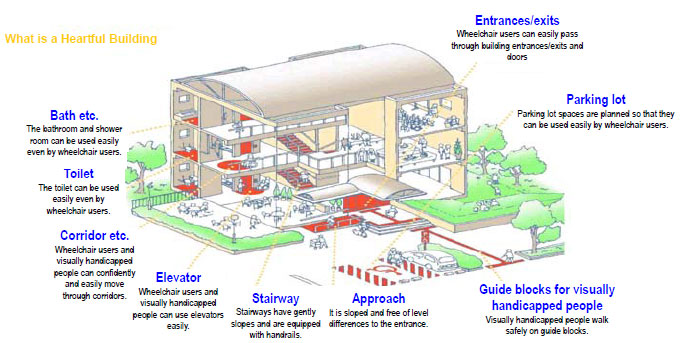 |

|
In 2000, The Law for Promoting Easily
Accessible Public Transportation Infrastructure for the Aged and the
Disabled (below called the "Transportation Barrier-Free Law")
was enacted. |
| Example of Transportation Barrier Free Measures |
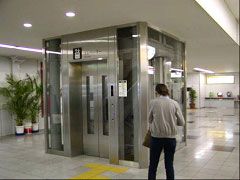 |
|
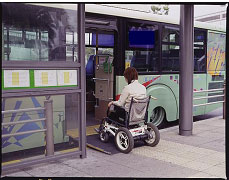 |
| Installation of elevators |
|
Non-step busses *4 |
| |
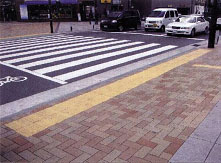 |
Improvement of level differences and
slopes on sidewalks and
the installation of guide blocks for visually handicapped people |
And social capital provision and transportation policies are
implemented systematically to achieve preset goals.
| Barrier Free Measures: Present State and Goals |
| Facility |
Barrier free measures |
Barrier free rate |
Present time
(2003) |
Goals of social capital
provision priority plans
(2007) |
| Passenger facility (1) |
Elimination of level differences |
44% |
Above 70% |
| Guide blocks for visually handicapped people |
74% |
Above 80% |
| Road (2) |
Removing level differences, ensuring width, installing guide blocks
for visually handicapped people |
25% |
About 50% |
| Building (3) |
Providing handrails and wide corridors |
30% |
About 40% |
| Housing |
Providing handrails and wide corridorsAbou |
3% |
About 10% |
Notes:
| (1) |
Passenger facility
used by an average of at least 5,000 people/day (examples: railway
stations, bus terminals, etc.) |
| (2) |
Major roads surrounding
(1) |
| (3) |
Stipulated buildings
used by an unspecified large number of people (examples: hospitals,
theaters, hotels, etc.) |
|
| Percentage of cars etc. in public transportation
systems that are barrier free |
| |
Present (2003) |
Target of the Basic Guideline to
Smooth Travel (2010) |
| Railway cars |
24% |
30% |
| Non-step busses |
9% |
20 – 25% |
| Passenger ships |
4% |
50% |
| Airplanes |
32% |
40% |
Changing Number of Acceptances of a Basic Concept
in Accordance with
the Transportation Barrier-Free Law |
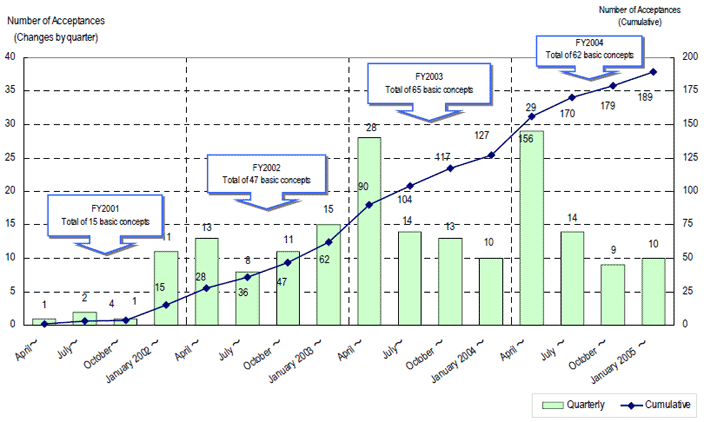 |
| Note) |
Includes basic
concepts prepared by cities, towns, or villages without
a passenger facility used by an average of at least 5,000
people/day (total of 10 basic concepts). |
|
|
|
 |
 |
| *4 |
Non-step bus: It is a bus
designed so that wheelchair users can board without assistance: busses
with their floors less than 30cm from the ground, no level differences
at exits/entrances, wheelchair spaces, and aisles wide enough for
the passage of wheelchairs. |
|
|